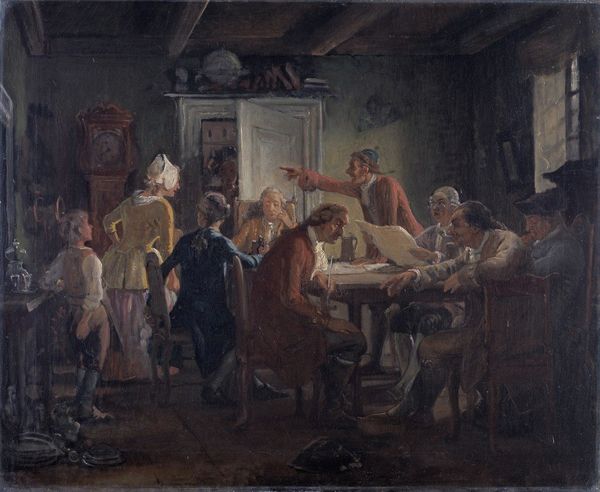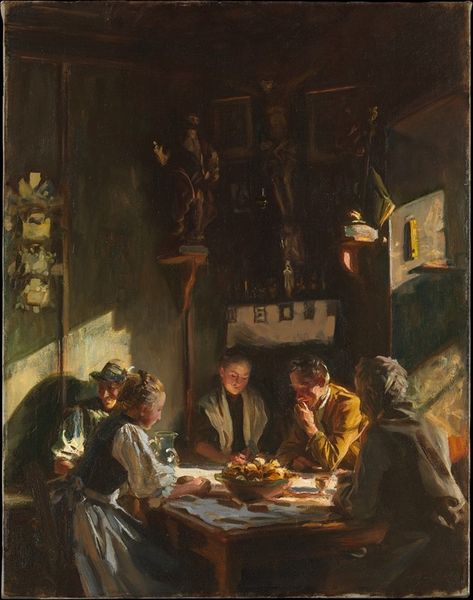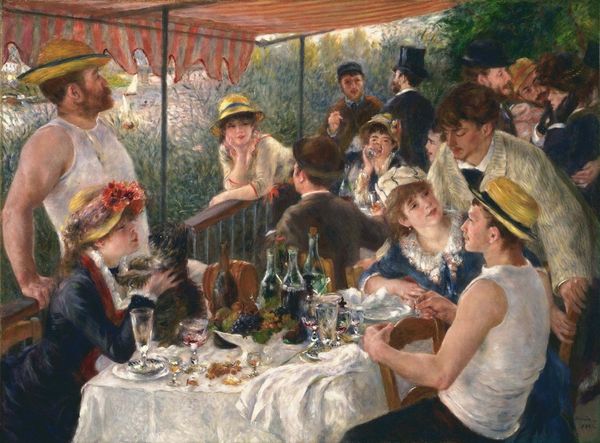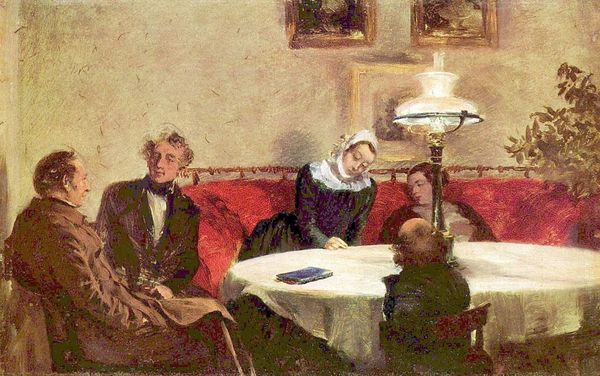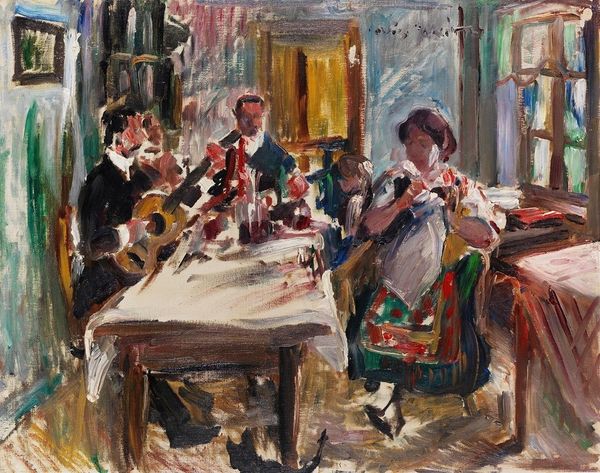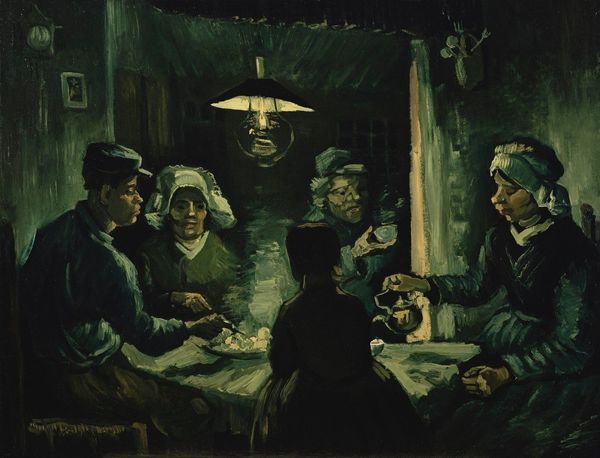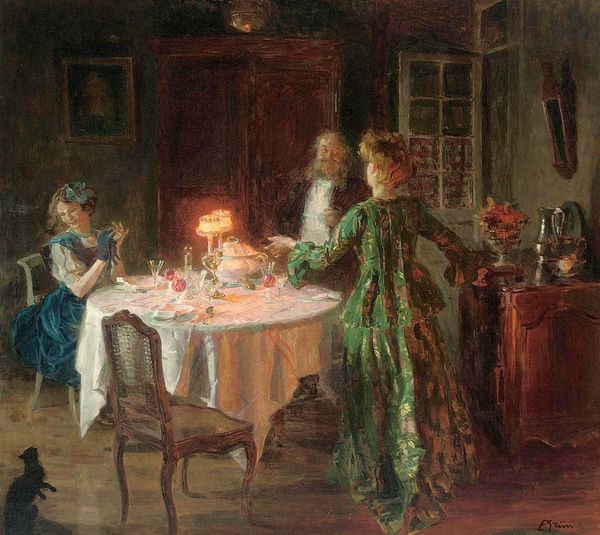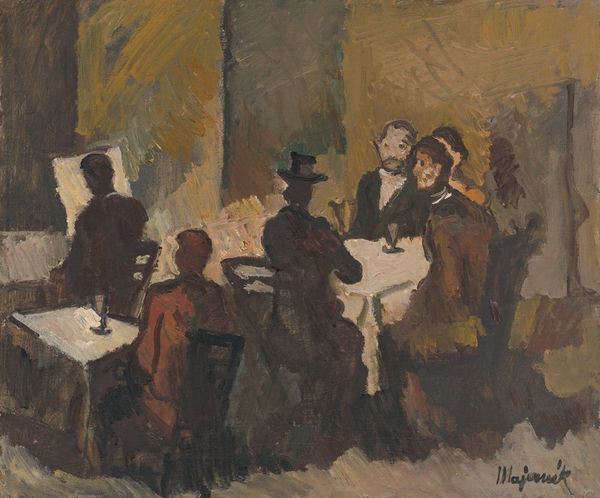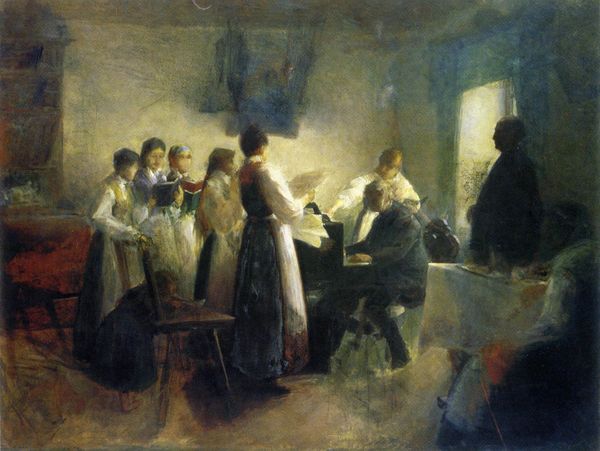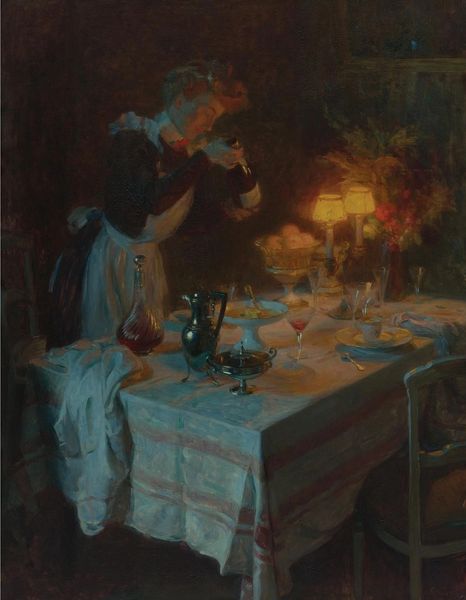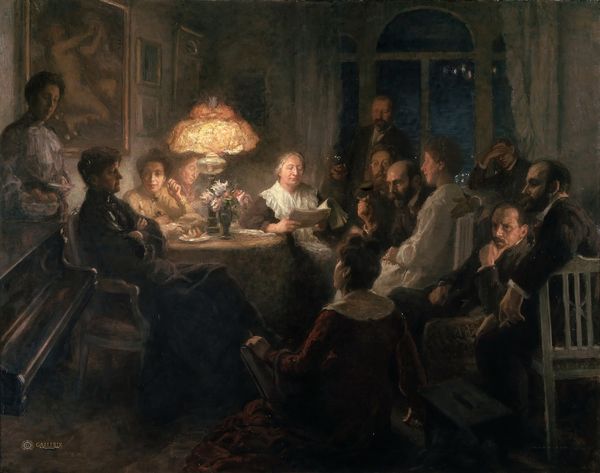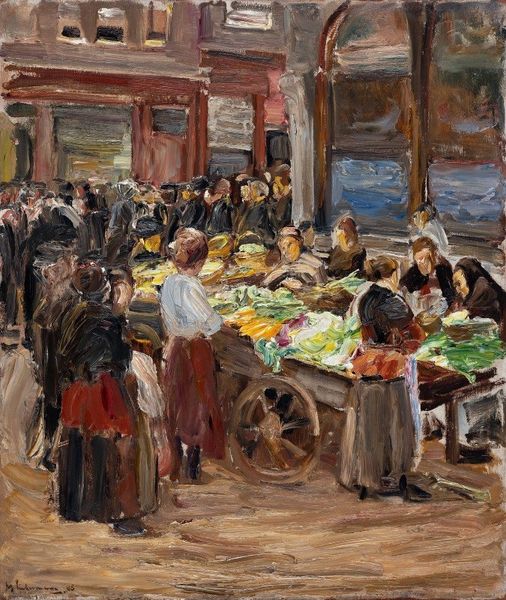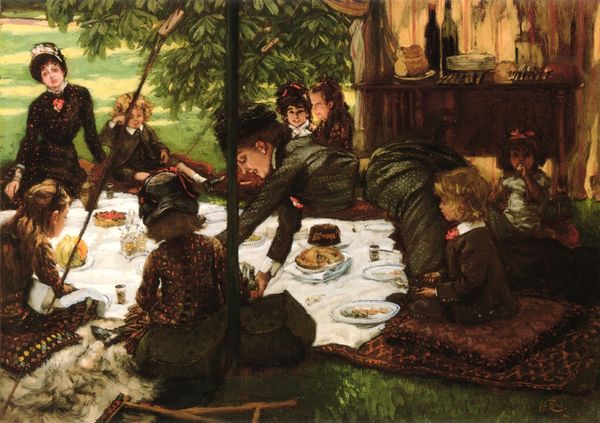
painting, oil-paint
#
portrait
#
gouache
#
painting
#
oil-paint
#
oil painting
#
group-portraits
#
painterly
#
ashcan-school
#
genre-painting
#
watercolor
Dimensions: overall: 66.2 × 81.28 cm (26 1/16 × 32 in.) framed: 80.96 × 96.36 × 6.51 cm (31 7/8 × 37 15/16 × 2 9/16 in.)
Copyright: National Gallery of Art: CC0 1.0
Editor: This is "Yeats at Petitpas'," painted by John Sloan sometime between 1910 and 1914. It looks like an oil painting, and what strikes me most is the contrast between the warm colors of the interior scene and the somewhat muted figures gathered around the table. How do you interpret this work from an art perspective? Curator: Note how Sloan’s application of paint constructs depth and directs our gaze. Observe the juxtaposition of light and shadow defining the characters, almost sculptural in their rendering. How does this compare with the more loosely defined environment? Editor: I see what you mean. The figures in the foreground seem to be more precisely rendered compared to the indistinct, fluid background. But what does that stylistic choice mean? Curator: Consider the way Sloan orchestrates the composition to draw the eye towards certain figures and to subdue others into an active field of forms, directing our attention and interpreting social dynamics via the interplay of presence and absence in pictorial terms. It is a painterly dance, a considered semiotic event, if you will. Editor: A semiotic event! So you're saying Sloan is communicating more than just a simple scene? He’s arranging these figures and details to represent deeper meanings? Curator: Precisely. Consider also how the interplay of the geometric rigidity and more naturalistic application may reflect some ambivalence. The contrast isn't random; the artist is constructing specific meanings, open to interpretation. Editor: That is such a formal approach. I find that so interesting. Curator: By considering the formal elements, we have revealed an underlayer. Do you find that impacts how you understand its cultural or social position? Editor: Absolutely. It has completely changed the way I see the artist's decision-making.
Comments
No comments
Be the first to comment and join the conversation on the ultimate creative platform.
